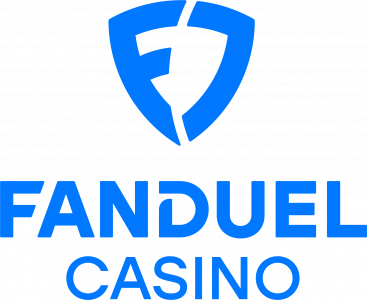Betting For Beginners: Types Of Wagers And How To Bet Them

The Pennsylvania sports betting scene is starting to get a little overwhelming. There are 8 PA brick and mortar sportsbooks to choose from. Plus, there are three online betting apps on offer in Pennsylvania.
You may be overwhelmed to go to a sportsbook and try to place a bet at the counter. Or you may want to learn a little more about how to bet online in PA.
With such an influx of new or relatively inexperienced bettors, an overview of the most common types of wagers becomes particularly useful.
So check out our basic rundown of what the lingo is, what types of bets are offered, and how to place those bets.
Moneylines, run lines, and puck lines
Novice bettors are likely familiar with terms such as “the spread” or “the number.”
However, it’s almost certain that the one type of bet they’ve ever heard is a good, old-fashioned, “straight-up” wager.
What is the moneyline?
Moneylines (football and basketball), run lines (baseball), and puck lines (hockey) are the industry terms for the odds assigned to which team will win a game or match.
Typically, moneyline wagers are the most expensive type of sports bet. In other words, the bettor needs to risk a more significant amount of money on average. And the end result is a payday comparable to other, less expensive bets.
Essentially, that’s because the odds of picking a straight-up winner in a sporting event are usually appreciably higher. It’s more difficult to correctly predict a margin of victory or whether a game will go under or over a projected total.
How to read the moneyline
Moneyline bets are presented in the following way on a sportsbook’s board or online platform, such as on the PointsBet PA mobile app:
Favorites are displayed with a three-digit number and a minus sign preceding it.
This number quantifies how much needs to be wagered on that team to win $100. The minus sign is indicative of the fact that when placing money on a “favorite,” the bettor must wager an amount greater than the amount he or she would potentially win.
Conversely, underdogs are displayed with a three-digit number and a plus sign is preceding it.
This number quantifies how much the bettor wins if he or she wagers $100 on that team. The plus sign is indicative of the fact that when placing money on an “underdog,” the bettor potentially wins an amount greater than the one he or she put down.
Incidentally, $100 is the figure utilized in the example because it is a nice, round number. That makes it easy to illustrate how a moneyline wager works. Moneyline wagers are actually accepted in any amount.
Sample moneyline wagers
The following are examples of NFL moneyline wagers:
Let’s say the Los Angeles Chargers are listed as a 10-point favorite over the Oakland Raiders.
With LA the clear-cut favorite, the moneyline odds are listed like so:
Chargers -450: A bettor who wishes to wager on the Chargers to win the game outright will have to bet $450 to win $100. Therefore, if the Chargers win the game, the bettor receives his or her original $450 back, plus $100, for a total of $550.
Then, the sportsbook lists the Raiders as the underdog. In the hypothetical game, the moneyline wager might look like this:
Raiders +360: A bettor who wishes to wager on the Raiders to win the game outright will win $360 if he or she wagers $100. Therefore, if the Raiders pull the upset and win the game, the bettor receives his or her original $100 back, plus $360, for a total of $460.
Point spreads
Point spreads are also a popular and well-known form of sports wagering.
The point spread is a projected margin of victory or defeat for the two teams in a given matchup.
Let’s continue with the Chargers example. The LA team is favored to win by at least 10 points over the Raiders. Those wagering on the Chargers and “giving up” those points are betting that LA outscores Oakland by more than 10 points.
Conversely, those who bet the opposite “side” of the game don’t care if Oakland loses. They only need them to lose by less than 10 points to realize a return.
There’s also a scenario where neither side realizes a return and all bettors merely break even. This happens if the Chargers win the game by exactly 10 points.
In that instance, the line is considered a “push.” The book refunds bettors who wagered either side of the game.
How much you can win betting the spread
Payouts on point spread bets depend on the odds assigned to either side of the wager. It’s important to note there are cases, often with particularly large spreads like in our example, where a favorite may actually offer better odds than an underdog.
Chargers are expected to win the game, but the odds of a 10-point-plus win in football are worse than one by a smaller margin.
Therefore, your payout if you bet the Chargers to win by more than 10 points may be -105 (must bet $105 to win $100).
Alternatively, your payout if you take the Raiders to lose by less than 10 points may be slightly worse at -115 (must bet $115 to win $100).
Oddsmakers set point spreads so wagers come in on both teams as evenly as possible.
Sportsbooks naturally want to avoid being “overexposed” to one side of a wager as much as possible. This helps prevent some potentially sizable losses for the casinos.
Totals bets
Totals, or over/under bets, are another straightforward wagering concept.
In a totals wager, the bettor places money on whether or not the cumulative point/run total of the two teams will be more or less than the total set by the sportsbook.
Totals bets are often, but not always, set with odds of -110, meaning the bettor must wager $110 to make $100.
To exploit the MLB, for example, a totals bet for a New York Mets-Miami Marlins game may be listed as follows:
9.0 runs (-110)
The sportsbook has set the projected total of runs scored by both teams at nine. Bettors who wager that the two teams combined will score either more or less than that total will need to wager $110 to win $100.
As with the point spread example, there is also the possibility of a push when it comes totals bets. In our example, this would occur if the cumulative run total is exactly nine.
In such a scenario, bettors would receive refunds on their original bet.
Parlay bets
Parlay bets are specialty wagers that involve at least two games, but often more.
There are various forms of parlay bets that are based on the different bet types previously outlined, i.e., point spread parlay wagers, moneyline parlay wagers, and totals parlay wagers.
Successfully cashing a parlay is a multilayered process compared to other bets. There cannot be a losing bet within a parlay, i.e., the bettor must be 100 percent correct on the wager attached to every game within the parlay.
On the bright side, pushes won’t disqualify a parlay wager from cashing. Parlays also survive eventualities such as rained-out baseball games or events that ends in a tie.
However, there is a trade-off. Namely, the payouts in those cases are calculated factoring out that game, lessening them to a varying degree.
Parlay odds can vary significantly from sportsbook to sportsbook. Once a parlay bet is placed, however, the odds and lines are locked in.
That holds true, irrespective of any other changes the point spread, projected totals, or moneyline involving any of the teams within the parlay undergo after the parlay wager has been made.
As with other wagers, the payout is commensurate to the degree of difficulty of getting the bet correct. To put it succinctly, the more teams are wagered on in a parlay, the better the payout.
Teasers
Teasers are a form of parlay wager that excludes moneyline bets.
In a teaser, the bettor gets to play oddsmaker. He or she can manipulate the point spread, or total, within a certain predetermined range. The goal is to improve the odds of winning the bet.
Due to this advantage afforded to the bettor, a teaser pays out less than a conventional parlay because of the greater probability of a win.
The one requisite with a teaser bet is that the movement of the line or total must be applied to each team in that parlay. However, it’s important to note that the bettor can apply the movement in different directions.
Having already cited NFL and MLB examples, let’s incorporate basketball into the discussion. An NBA teaser on a two-team parlay that combines the above would be the following:
In a Pistons-Hornets matchup where Charlotte is favored by 5.5 points, the bettor moves the line an additional four points up to 9.5 points.
He or she then plunks down money on the Pistons to lose by less than that margin. The four-point movement is a significant one and considerably increases the odds of Detroit coming in under the number.
Conversely, say a Toronto Raptors-Golden State Warriors matchup in the same parlay opens with Golden State as a seven-point home favorite.
The bettor favors the Warriors to likely prevail, but has doubts about them being able to do so by more than seven points against a quality opponent. Thus, they bring the spread down the same four points to lower the required margin of victory to three points.
That significantly increases the odds of a Golden State cover.





